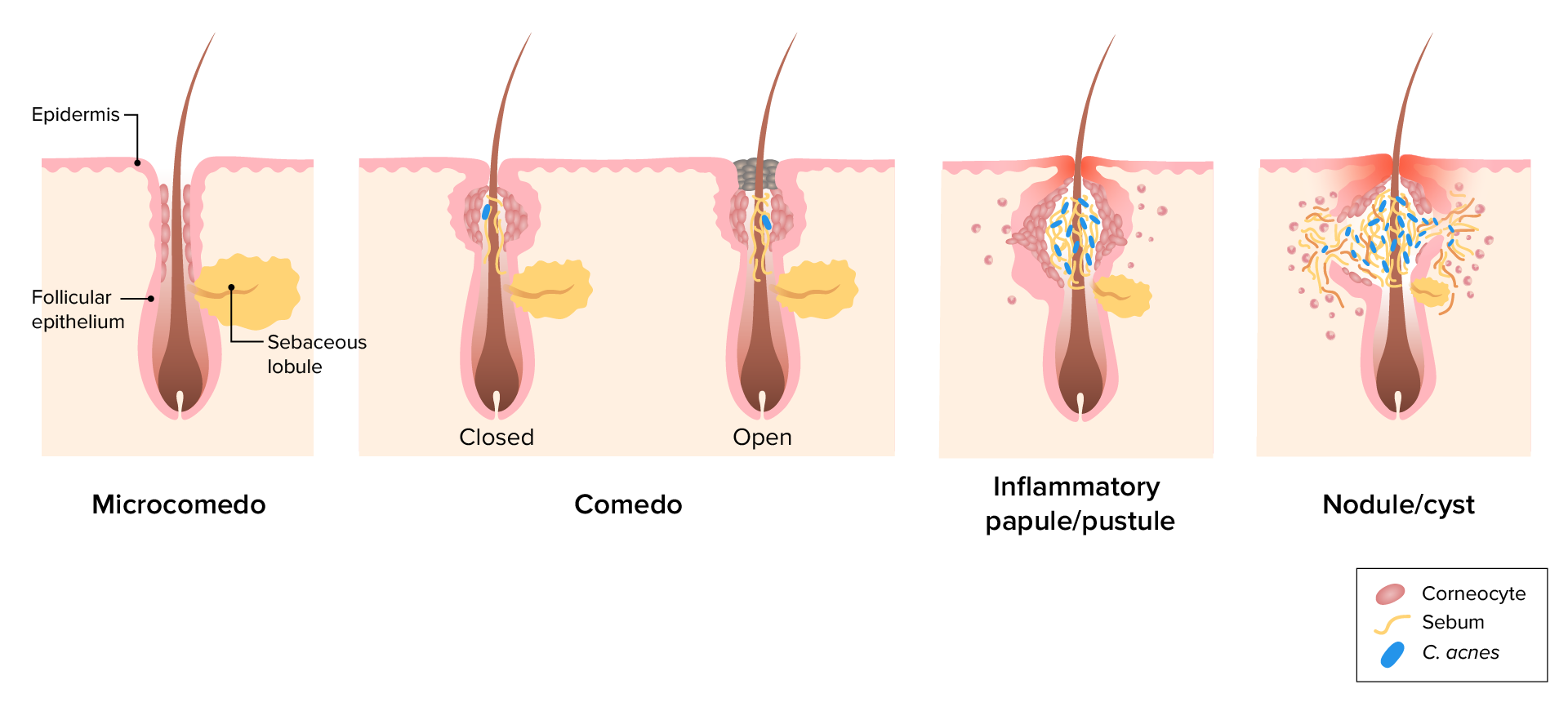Playlist
Show Playlist
Hide Playlist
Acne in Darker Skin: Epidemiology and Etiology
-
Slides Acne in Darker Skin Epidemiology and Etiology.pdf
-
Download Lecture Overview
00:01 Welcome to our lecture today on acne. 00:05 So what is acne? There are three pathogenic mechanisms for acne. 00:10 It is actually defined as inflammation of the skin caused by follicular hyperkeratinization, excess sebum production, and thirdly, follicular colonization by the Propionibacterium acnes. Recent studies suggest that changes in skin microbiome plays a pivotal role in the development of acne, particularly overgrowth of the Propionibacterium acnes, which is one of the other factors that are implicated in acne. 00:43 Research also suggests that restoring balance to the skin microbiome through interventions like probiotics or prebiotics may hold promise for managing acne. 00:54 More on topical therapy that will be discussed. 00:58 So we want to look at the epidemiology, the etiology, what are the clinical manifestations of acne, how do we diagnose acne and how do we treat patients with acne. And of course we also look at the complications and more importantly, what is unique about black skin and acne. 01:16 Because this is what these lectures about. 01:19 So if you focus on epidemiology, we do know that acne is the most common skin disease that is seen globally. It has a prevalence of about 9.4% and affects approximately 80% of people, mainly during adolescence. 01:37 Males tend to be more commonly involved than females during adolescence, and women are more likely to be affected as adults, and we have an entity called middle-aged acne, where women tend to be more involved. 01:53 So what's the female-to-male ratio? It's about four females to one male. 01:58 So let's now move on and talk about the causes of acne or etiology. 02:03 Well, we do know that acne those people who have acne have a genetic predisposition. 02:09 And this accounts for about 50 to 90%. 02:13 There are of course aggravating factors. 02:15 For example hormonal variation, which occurs during puberty or menstrual cycle and during pregnancy and in those patients who have polycystic ovarian syndrome. 02:28 There are also mechanical factors, for example, acne that can be due to occlusion using of headbands. You know, people go to the gym and sweat. 02:39 That can actually trigger acne on the forehead. 02:42 Shoulder pads. Cosmetics that are too oily that can block the pores can also cause acne in what we call cosmetic-induced acne. Drug history is important, actually, when you are consulting with a patient with acne. 02:58 Drugs like lithium, steroids, particularly the steroids in Africa, actually, we find that this is a very common cause of acne, and we call it a steroid-induced acne. 03:09 And of course, anabolic steroids that men and women take to try and strengthen their muscles. 03:17 And of course, anticonvulsants, those people who have epilepsy. 03:22 The diet has also been implicated, particularly dairy products, due to hormonal components in milk and high glycemic index foods.
About the Lecture
The lecture Acne in Darker Skin: Epidemiology and Etiology by Ncoza Dlova is from the course Inflammatory Diseases in Patients with Darker Skin.
Included Quiz Questions
What is a main pathogenic mechanism in the development of acne?
- Follicular hyperkeratinization
- Dermal fibrosis
- Melanin overproduction
- Basement membrane disruption
- Epidermal water loss
What is the approximate female-to-male ratio observed in middle-aged acne patients?
- 4:1
- 1:4
- 2:1
- 1:2
- 3:2
Customer reviews
5,0 of 5 stars
| 5 Stars |
|
5 |
| 4 Stars |
|
0 |
| 3 Stars |
|
0 |
| 2 Stars |
|
0 |
| 1 Star |
|
0 |




